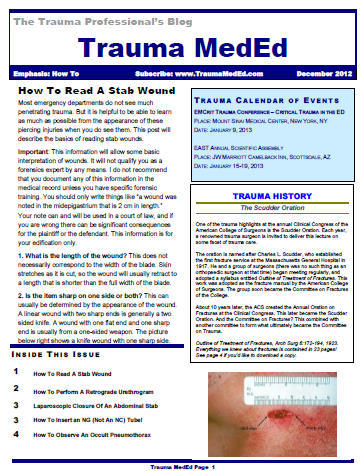The majority of trauma patients are seen initially at non-trauma centers. And the majority of those patients can be treated just fine at that local hospital. However, a few (some say about 15%) do need to be transferred. The question frequently arises, “what studies do I need to do before transferring?”
The danger is that doing things that slow down the transfer can result in bad outcomes. For example, a patient may have a spleen injury that is actively bleeding. Every minute that this patient is not receiving “definitive treatment”, she loses more blood. And every cc of blood lost causes her to inch closer to shock, other complications, or death.
The key is to get people who need a higher level of trauma care on their way to a higher level trauma center as soon as the need is recognized. There is a natural tendency to do diagnostic studies, such as CT scan, in these patients. Sometimes they are needed to actually figure out what is going on. But more often they are obtained to “do a complete workup” or because “the trauma center expects me to.”
Unfortunately, these are incorrect assumptions. The complete workup cannot be used by the referral center if they are shipping the patient, and for a variety of reasons they may not be useful to the trauma center. This is one of the major reasons that referral patients receive extra radiation exposure. About half of the studies performed at the referral hospitals need to be repeated!
The Referral Hospital Trauma Rule: Do any simple study needed to ensure the patient will stay alive until the helicopter/ambulance arrives (typically chest or pelvic xray). If at any point, you see something obviously not treatable at your hospital (i.e. open fracture, GCS 8, partial amputation), DO NO FURTHER STUDIES AND PREPARE TO TRANSFER. If the patient does not have such an obvious problem, do only the tests you need to determine if you can keep the patient. But as soon as you find anything that you cannot treat, stop further studies and prepare to send the patient onward. And don’t forget to send working copies of the few studies that you did get.


